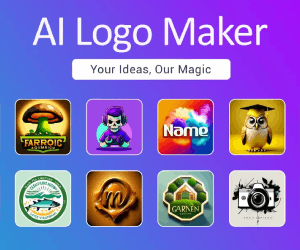Machine Translation Reviews:a free AI translation tools
About Machine Translation
Machine Translation is a free AI translation tool that uses several different translation engines to accurately translate text. The tool is simple to use – just select the source language, choose the target language, and enter your text. The AI can automatically detect the source language if you’re unsure. Machine Translation can also do context translation, which allows you to maintain the nuances and subtleties of the original text, and also offers the ability to compare translations from multiple engines side by side. There is a limit of 250 words per translation.

Our Belief
At MachineTranslation.com, we believe that language should never get in the way of communication. There is nothing more important to us than clear and accurate communication in both personal and business interactions. Breaking down language barriers and building meaningful connections through access to accurate, reliable, and customizable machine translation tools is at the very heart of our values.
Our Mission
Our mission is to make machine translation accessible and reliable for everyone. We seek to achieve this by leveraging the latest advances in AI and machine learning. Our team, made up of experienced linguists, researchers, and engineers, have worked hard to develop a solution that empowers people to communicate more effectively, regardless of the languages they speak or write.
Our Solution
Our tool is designed to analyze, compare, and recommend the best machine translation for any given text and language pair. It relies on the formidable abilities of GPT-4 to determine the strengths and weaknesses of each MT engine translation output, which in turn provides a tailored translation experience for each user. We also understand that every message is unique, which is why our tool takes into account the context and nuances of the text to improve the accuracy of any translation. That way, individuals and businesses alike can communicate with confidence and clarity.
The tool will continue to evolve as it considers and implements further enhancements over time such as additional MT engines and advancements in GPT technology. We are committed to providing the best experience possible, so we will not stop until we are certain that this solution meets the needs of all our users around the world.
FAQ
What is meant by machine translation?
Machine translation is the process of using artificial intelligence to automatically translate text from one language to another without human involvement. Modern machine translation goes beyond simple word-to-word translation to communicate the full meaning of the original language text in the target language.
What is machine translation and examples?
Rule-based machine translation (RBMT).
It often performs better for languages with well-defined grammatical rules and less ambiguity and metaphors. Example: A rule-based translation system might have a rule stating that the word “dog” in English should be translated to “perro” in Spanish.
Is Ai translation the same as machine translation?
Artificial translation isn’t the same thing as standard machine translation. However, machine learning plays a vital role in AI translation. Unlike standard machine translation engines, which approach translations on a word-by-word basis, AI translator tools apply advanced machine learning to languages.
What is machine translation process in NLP?
There are four different types of machine translation in NLP: statistical machine translation, rule-based machine translation, hybrid machine translation, and neural machine translation. The main advantage of machine translation is its delivery of an effective combination of both speed and cost-effectiveness.
What are the advantages and disadvantages of machines translation?
Machine translation has been around for a while, and while it can still provide results that lack accuracy and fluency, recent developments in the field have made it reasonably affordable, accessible, and, in some situations, exceedingly accurate. Saving money and time are the two main ways that costs can be reduced.
Is machine translation part of NLP?
In the 21st century, we all use NLP-based software and applications in our daily lives to assist us to perform our tasks, although most of us are unaware of this. Now it is time to shed some light on it. Some of the most commonly used NLP uses cases are: Machine Translation (MT)
What are the benefits of machine translation?
Machine translation can significantly reduce costs associated with hiring professional translators. With machine translation, businesses can quickly and easily translate large volumes of text with little to no human intervention. This saves time, reduces errors, and lowers costs.
What is machine translation types?
There are several types of statistical-based machine translation models which are: Hierarchical phrase-based translation, Syntax-based translation, Phrase-based translation, Word-based translation.
What is the role of machine translation?
With machine translation, however, large amounts of text can be translated quickly and accurately, reducing the time and cost required to communicate across language barriers. Another significant advantage of using AI and machine translation is the ability to translate a wide range of languages accurately.
Is Google Translate a machine translation?
Google Translate is a multilingual neural machine translation service developed by Google to translate text, documents and websites from one language into another.
Is machine translation accurate?
Context – Machines can’t translate context or interpret puns, metaphors, slogans, or understand idiomatic differences as well as a human. Consistency – The consistency of translation can vary across different languages. Accuracy – Machine translation is generally slightly lower than human translation accuracy.
How is NLP different from machine translation?
NLP systems can be used for parsing a text document or analyzing language in conversation. Conversely, MT involves translating one human or computer-generated language into another using rules-based systems or statistical models such as neural machine translation (NMT).
What is the difference between neural machine translation and machine translation?
NMT systems require only a fraction of the memory needed by traditional statistical machine translation (SMT) models. Furthermore, unlike conventional translation systems, all parts of the neural translation model are trained jointly (end-to-end) to maximize the translation performance.

